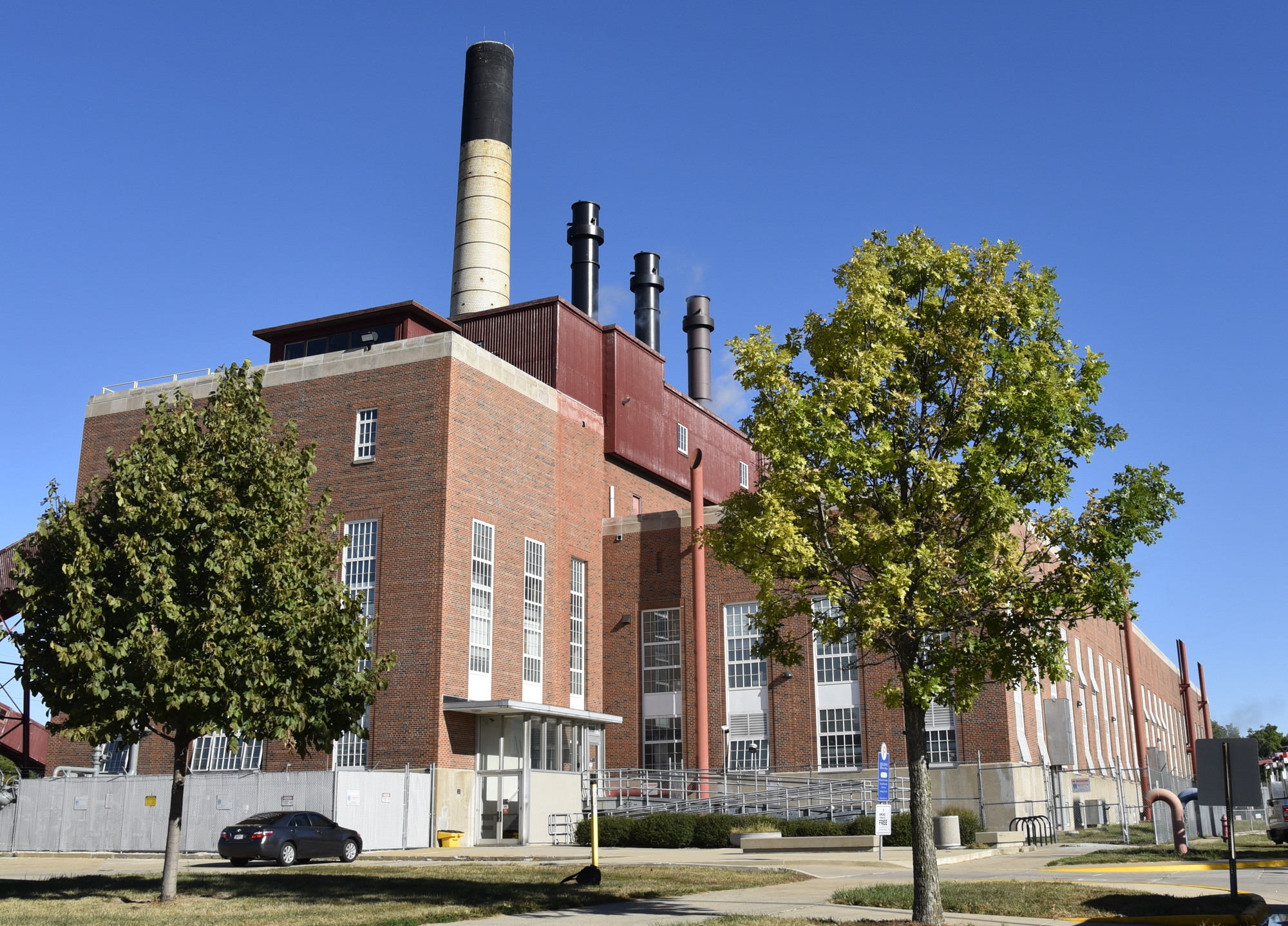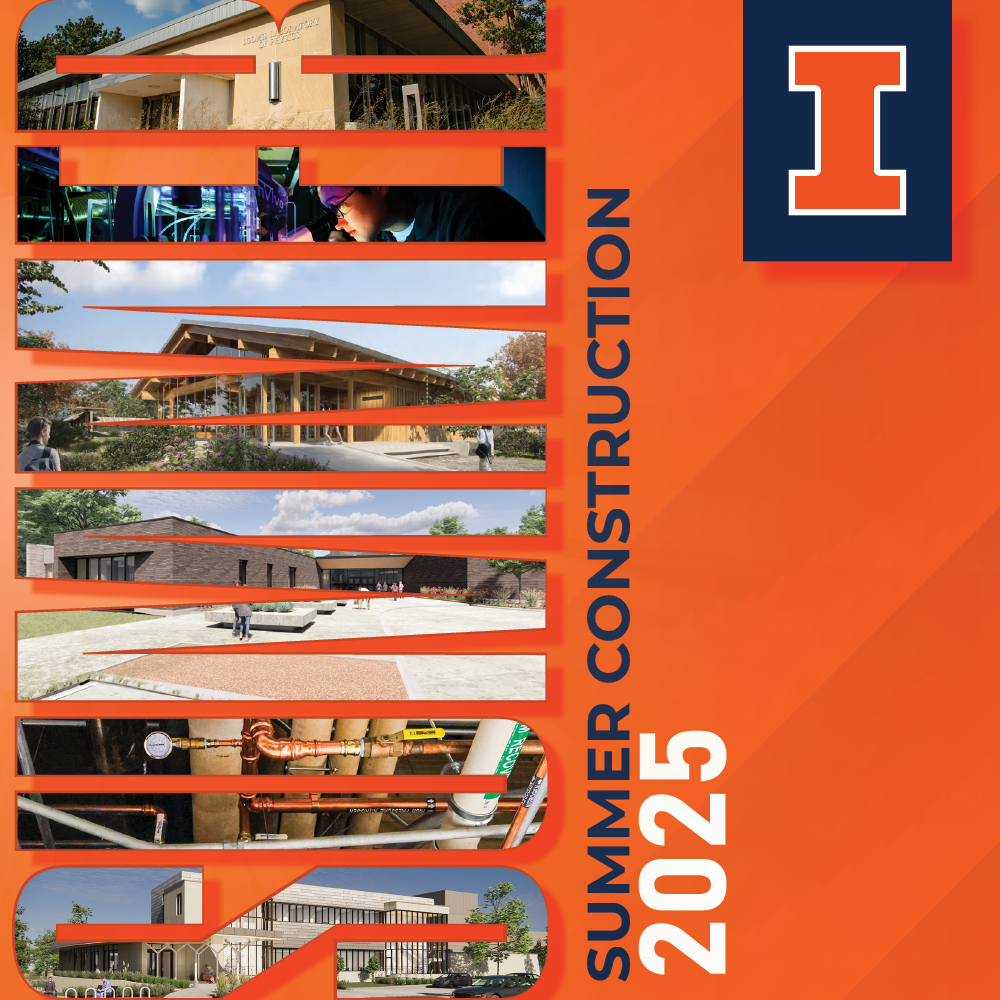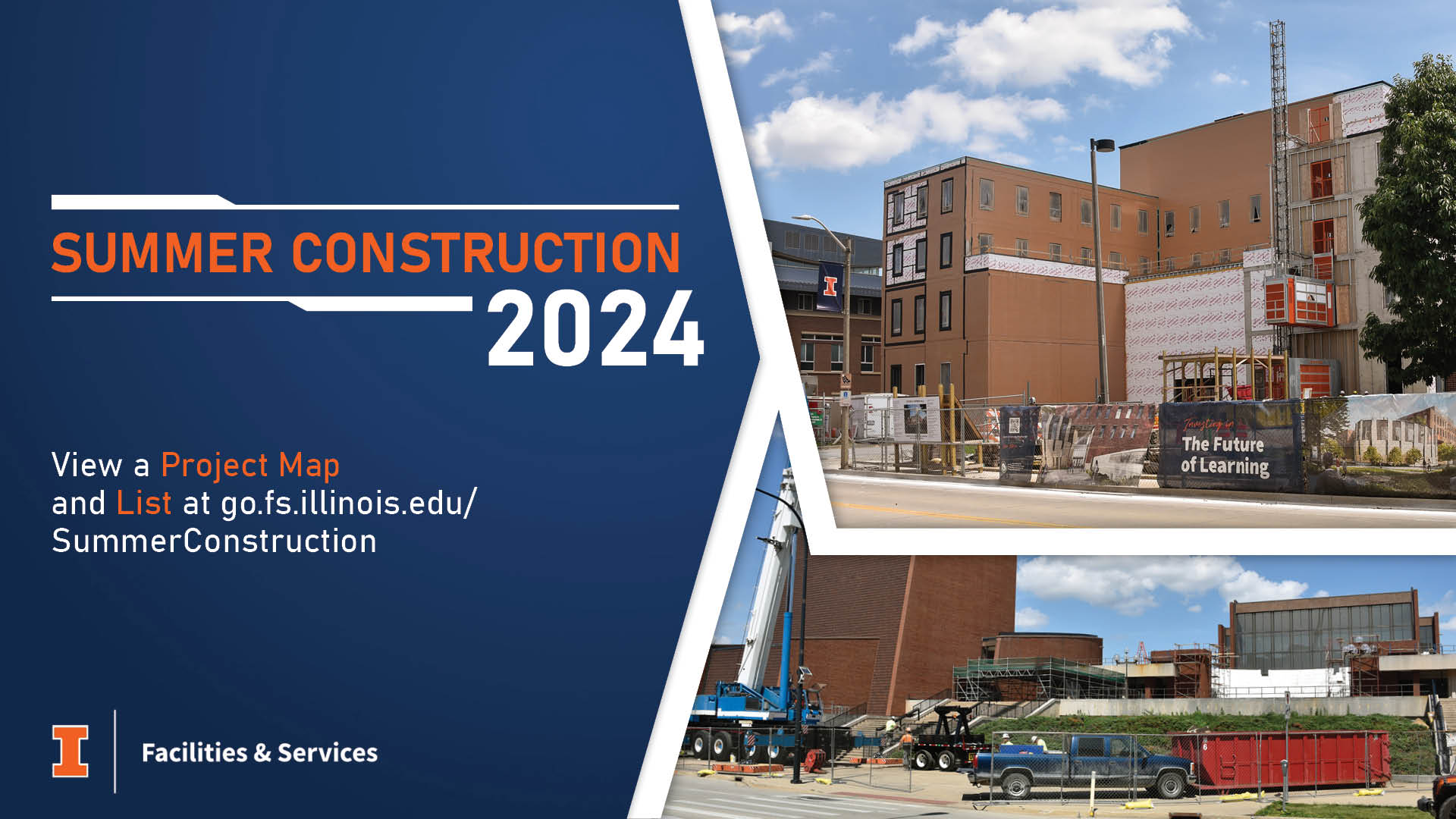Abbott Power Plant

Abbott Power Plant is the workhorse of the university. Named for William L. Abbott, a former president of the university’s board of trustees, the plant began sending steam to campus with one boiler and a 4,000 KW turbine. Abbott has been powering the campus ever since, supplying 70-75% of the energy demand for the Urbana campus.
This cogeneration facility simultaneously produces both steam and electricity for campus with an emphasis on safety, reliability, and environmental responsibility. Abbott continues to meet or exceed all Environmental Protection Agency (EPA) emission standards, and its equipment is designed to reduce its carbon emissions each year.
Flexible and Reliable
Reliable energy service is critical to the university and its $640M in funded research. Abbott Power Plant utilizes natural gas, coal, or fuel oil in its boilers and combustion turbines. This fuel flexibility enhances system reliability and helps manage energy market financial risks. If a fuel becomes unavailable, prices climb, or campus energy demands increase, Abbott can adapt its fuel sources and ensure uninterrupted service to campus.
Cost Efficient Cogeneration
There are five primary types of energy sources that operate at Abbott.
Two gas turbines, which can operate on natural gas or fuel oil, are utilized to generate electricity. Each gas turbine is connected to a heat recovery steam generator (HRSG) that captures the hot exhaust gases from the turbine and uses that heat to generate steam. Three gas-fired boilers (natural gas and/or fuel oil) and three coal-fired boilers convert water to steam.
The steam generated in the HRSGs and boilers is used to operate steam turbine generators (STGs). The STGs use the high pressure steam from the boilers/HRSGs to spin a steam turbine that drives a generator to produce electricity. The low pressure exhaust steam from the turbines is sent to campus and used to serve campus energy needs including but not limited to space heating, water heating, and space cooling.
Approximately 150 campus buildings use the steam produced at Abbott for their heating. The gas turbines and steam turbine generators together produce enough energy to power 25,000 average U.S. homes.
Environmentally Compliant
Using the best available air pollution control technology, Abbott Power Plant meets or exceeds all Environmental Protection Agency (EPA) emission standards. Electrostatic precipitators (ESP) and a flue gas desulfurization unit (scrubber), supported by a Continuous Emission Monitoring System (CEMS) in the stack, remove 90% of air pollutants, providing significant environmental benefits compared to conventional electric generation and heat-only systems. Efficient cogeneration coupled with emission reduction equipment have reduced carbon dioxide emissions by 101,000 tons per year, the equivalent of removing 18,000 automobiles off Illinois highways or the reforesting of 21,000 acres of land.
Abbott Power Plant – Energizing the Future
Electricity Distribution
Electricity for the campus comes from two primary sources: production at Abbott Power Plant on campus or purchased from another provider by Prairieland Energy, Inc. and then shipped to the main campus substation, where it is then distributed to campus. Additionally, some campus facilities are served directly by Ameren Illinois, the local electric utility service.
The majority of the university’s 52-mile electrical-distribution system is underground ductwork and manholes and includes two substations, 12 distribution centers, and 28 load centers. Point-of-use electricity meters are being upgraded to continuously report each building’s energy usage.
Steam Distribution
The university’s steam supply is produced at Abbott Power Plant and is distributed via three different systems: walkable steam tunnels, shallow steam tunnels, which are large enough only for two pipes; and direct-buried piping systems, which utilize no tunnels. Once the steam is in the buildings, it is distributed through radiators, water-heating systems, and heat exchangers. After the energy in the manufactured steam has been utilized, the remaining condensate is metered and returned to Abbott.
Walkable steam tunnels require special safety gear and are for authorized personnel only.
Links
Documents



